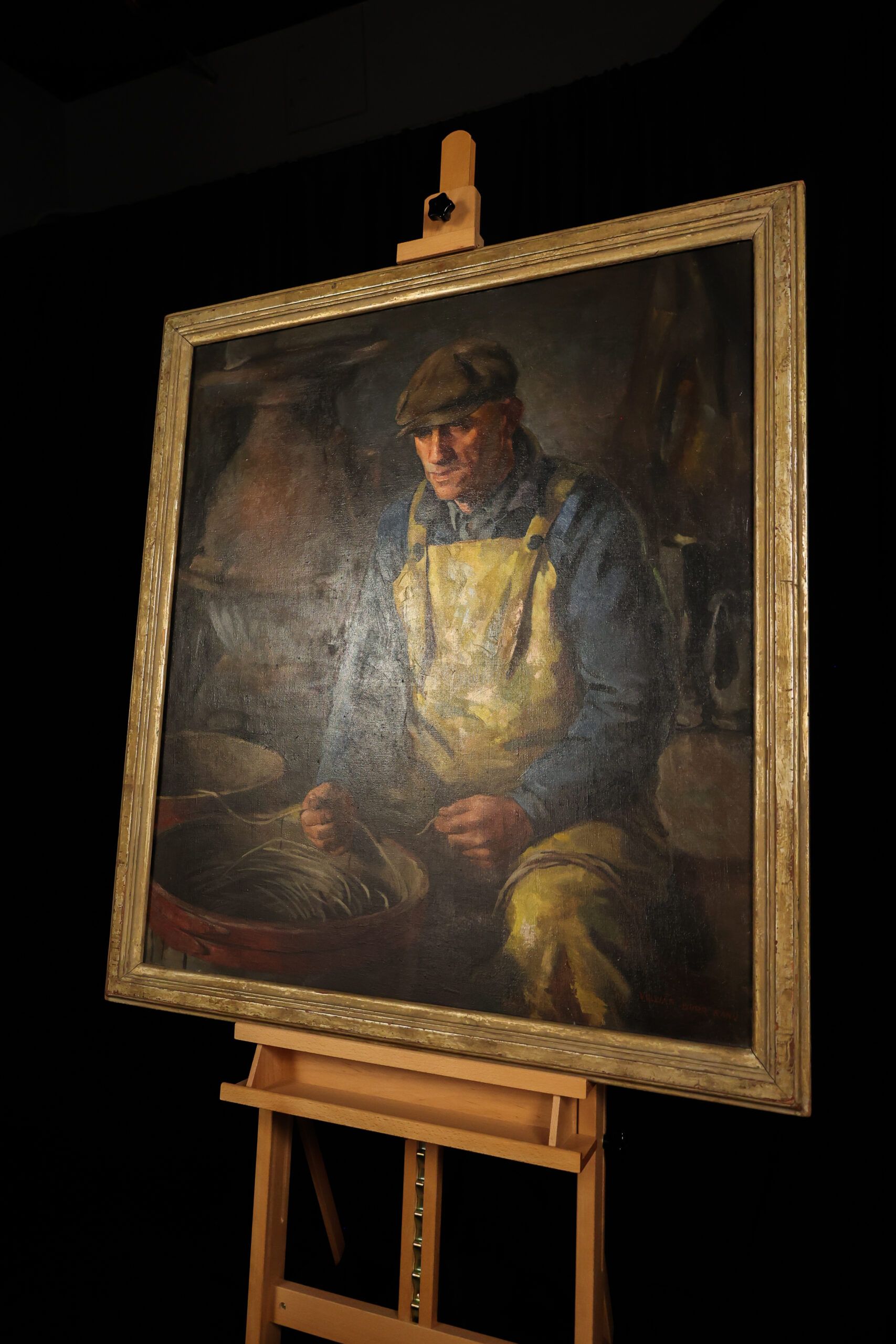
He lowers his eyes to his work,
studying the cord in his strong, calloused hands.
He shifts slightly in his seat, suddenly uncomfortable as he catches a glimpse of how dirty his slick yellow oilskins are. He’s never minded it before, but now – now he’s being painted.
He sits, trying to focus on baiting this trawl line when the man sitting across from him looks out from behind his easel and canvas. He takes a deep breath, his eyes glancing at the painter then back down to his work.
He thinks “Why would he want to paint… me?”
A Strong First Impression
This work by Vollian Burr Rann struck me so deeply and has sat with me, in my heart and my mind, for nearly a year since I first saw it. It’s dramatic and almost regal in its treatment. Only once before in this series have we looked at portraiture in our Collection – we delved into the life of Anna Hyatt Huntington as told through her stunning three-quarter length portrait painted by Marion Boyd Allen.
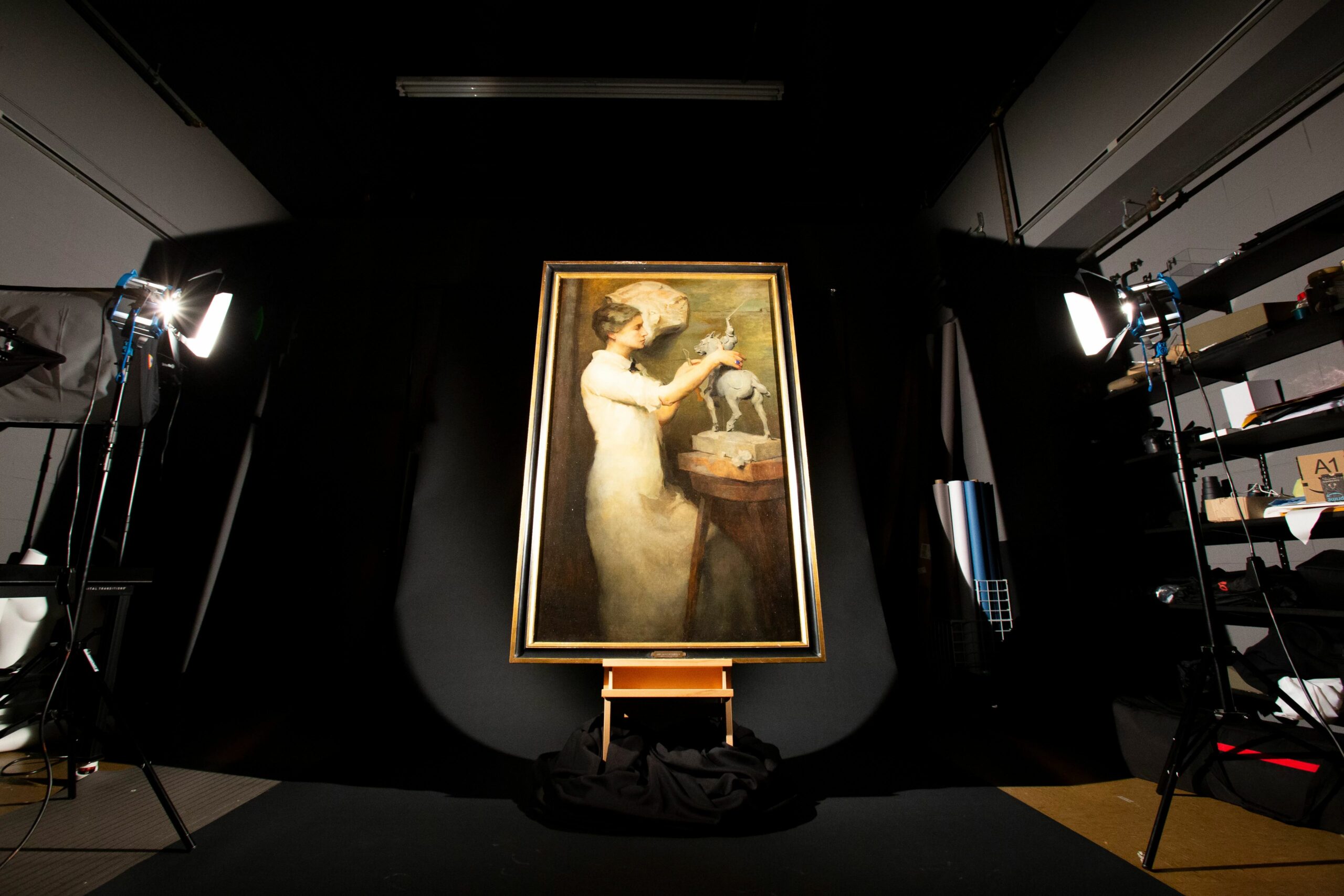
Anna was a champion of what women could achieve, but her beginnings were… more than modest. She had standing in society – she is the kind of woman who has portraits painted of her.
The Elusive Artist
So, seeing this type of polished portraiture for a fisherman left me with questions;
“when was this painted?” “why was this painted” and “what was the connection between the artist and sitter”?
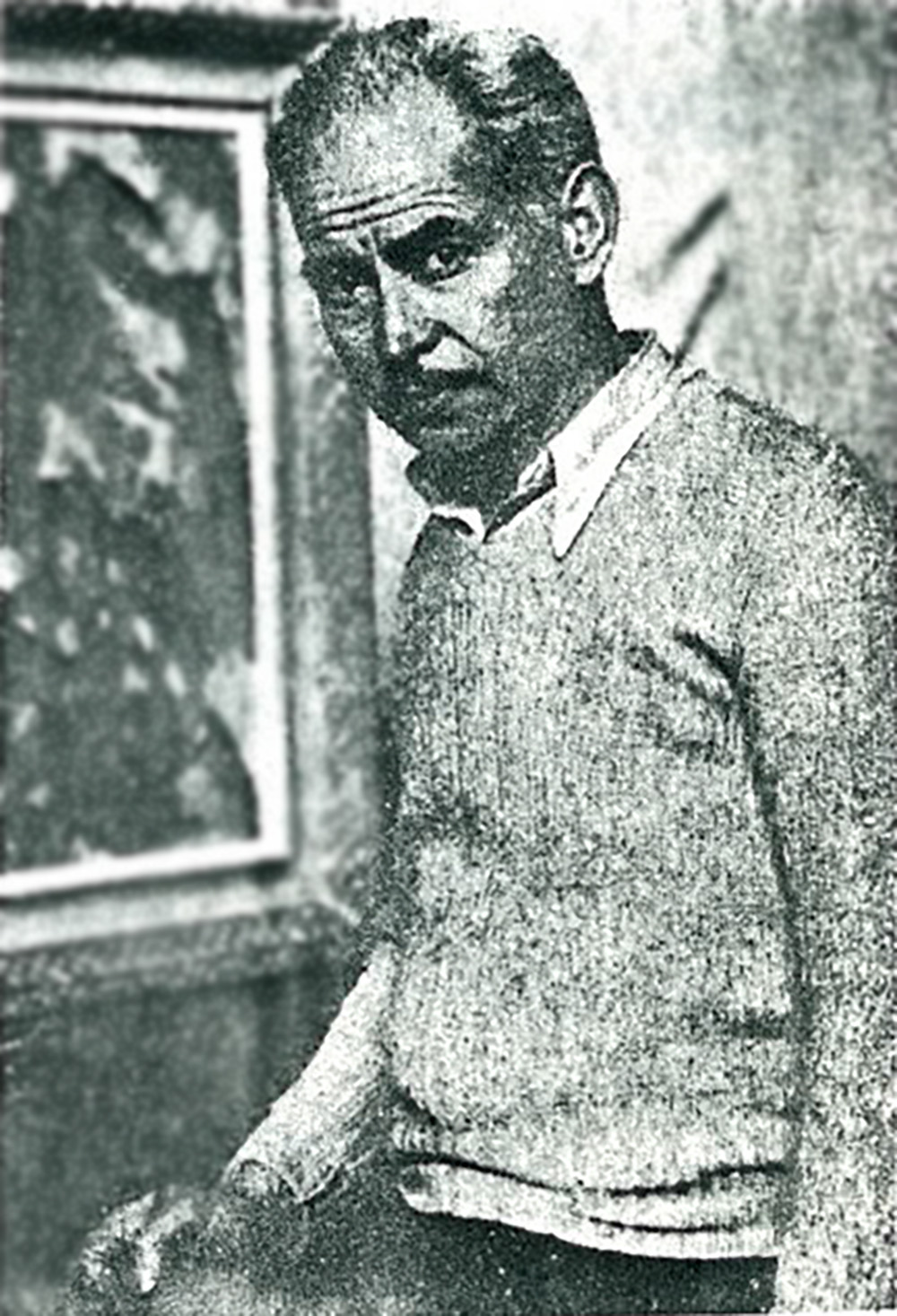
The Artist, Vollian Burr Rann, though an important figure in the Provincetown art colony, is elusive. There is very little actually known about him and, frustratingly, he dated almost none of his works. From the very little that is known of Rann, we know he painted portraits of prominent Provincetown residents. It’s likely that these portraits, like so many portraits in art history, were commissioned by or for the sitter.
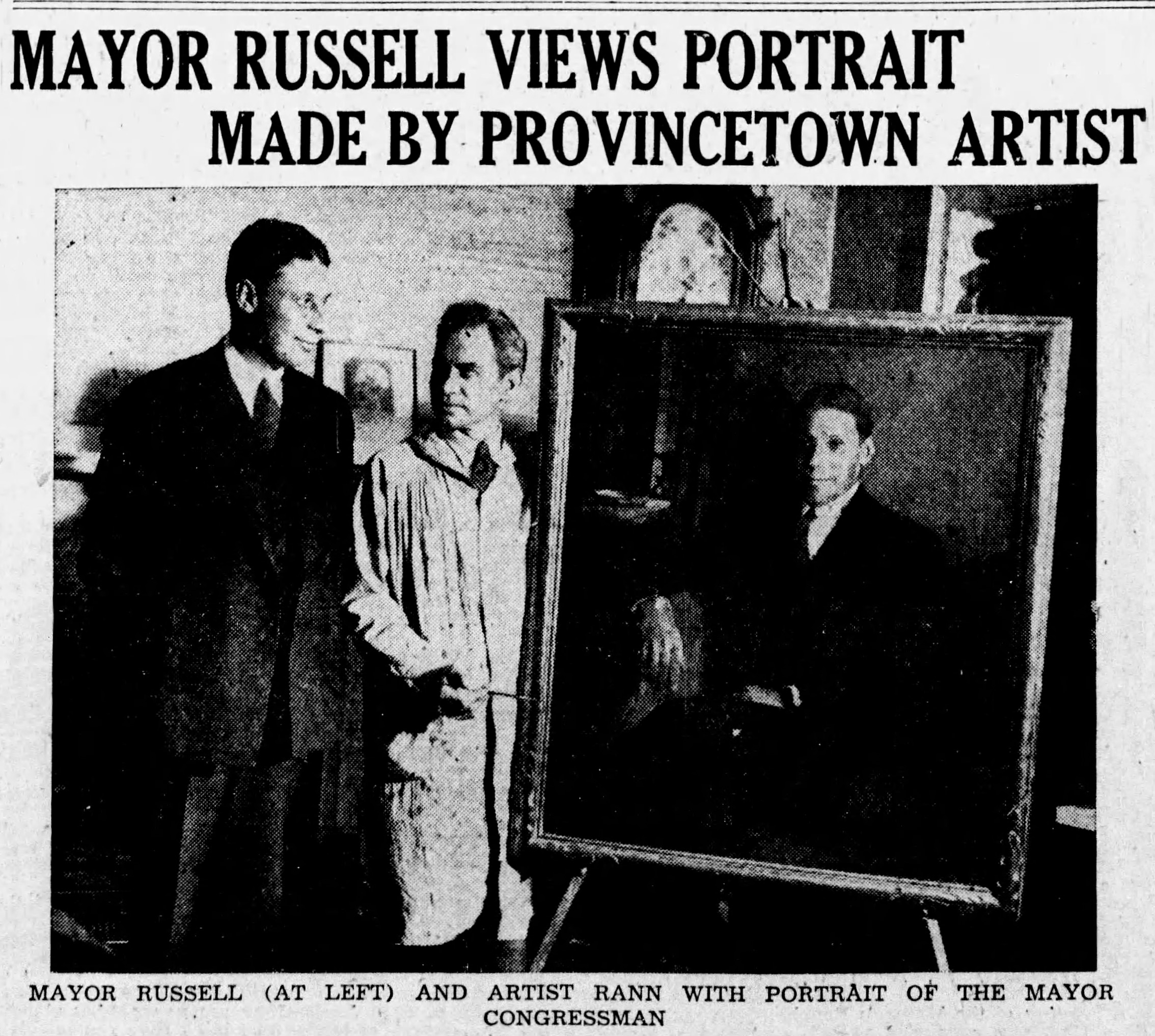
This lack of details and his portraits of notable community members created even more questions and sent me searching, calling, emailing, reading – wondering – why the artist chose to paint this portrait – this man.
Despite my frustration, I’m grateful to the artist for the one detail he did include – a name. His name. Manuel Gaspar. With this name, a path of the maze opened before me- this piece of information allowed our team to search historical records and documents to find Manuel.
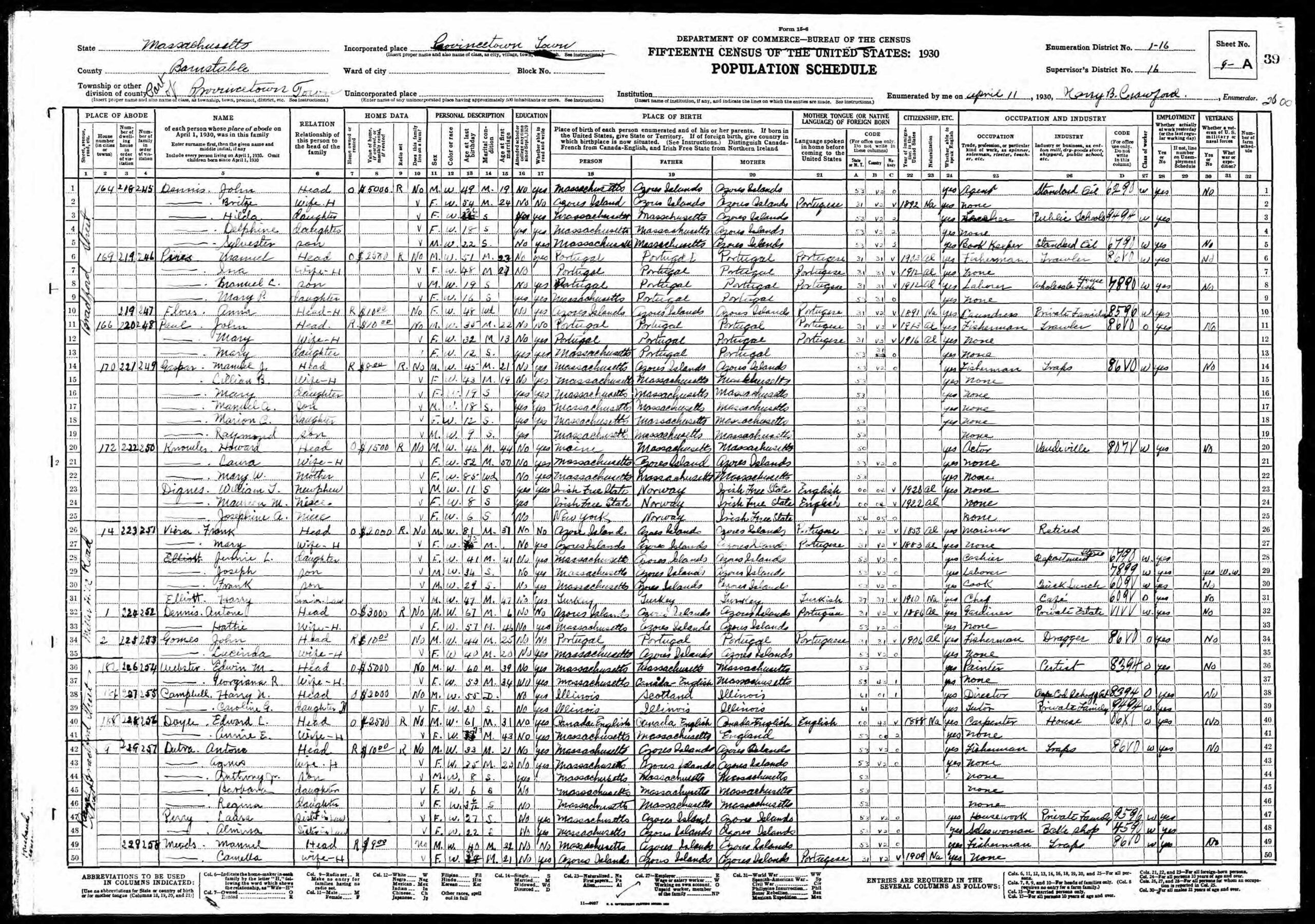
We still have more questions left to be answered, but what we learned brought this work to life, gave it depth and weight beyond just being a stunning portrait.
So please, let me introduce you to Mr. Manuel Gaspar, a traps fisherman. Husband, father, and Portuguese immigrant. A man who left his life in the Azores in the early 1900’s, likely in search of a better life, and settled down in Provincetown, Massachusetts, an area with a large Portuguese population.
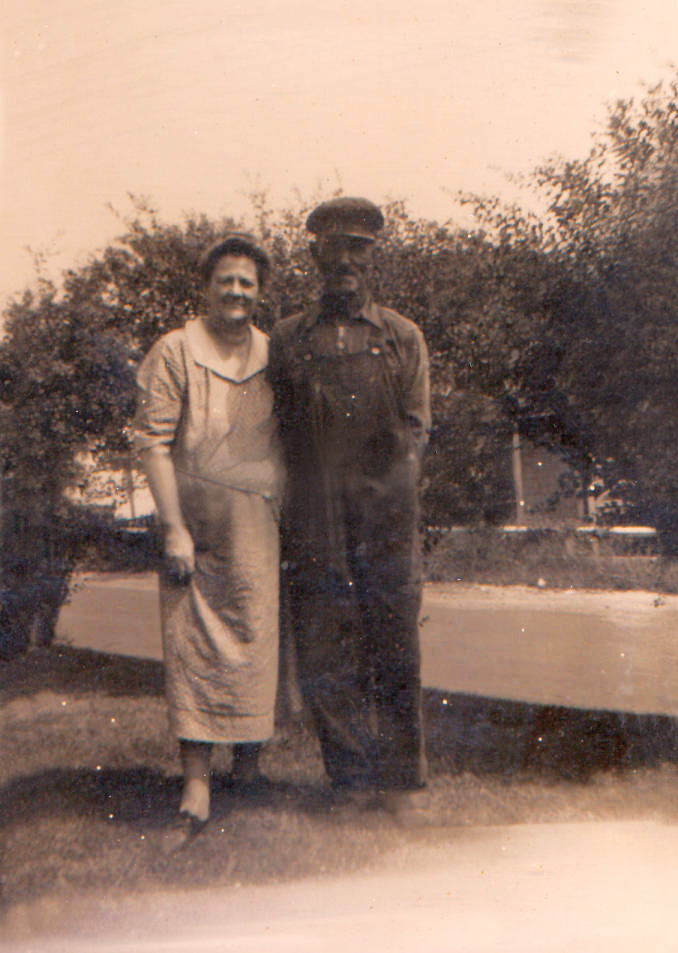
So Many Questions
I try to give some extra context in my blogs because, of course I cant include everything in my episodes – so if you’re reading this, you’re in for a treat because this is my favorite Beyond the Frame find yet – and a source of a lot of my questions:
As I was looking for information on the artist and trying, in vain, to narrow down a date for our portrait of Manuel Gaspar, I searched auctions and galleries and kept coming across paint and watercolor sketches that included a fisherman in a blue jacket and yellow oilskins. And there were a lot of them. Sure this isn’t an unusual “uniform” for a fisherman but then I saw his hat, his face. Several times.

First I started spotting yellow oilskins, and the blue jacket – if you look closely you can see them in the left-hand work above. Then, I saw the one in the middle. His clothes, his cap, his expression – it had to be Manuel. Then again in the one on the right – the same scene but a study done from a different angle. And just as a fascinating extra find – that study was found on the back of another watercolor painting by the same artist!
My head was spinning – who was Manuel Gaspar and why was he showing up in SO MANY of Rann’s sketches and paintings? Sure I was looking for Manuel, and he was always shown in his bright yellow oilskins, but out of the many works by Rann that I looked through, I rarely saw a subject repeated and depicted in studies and compositions as many times as Manuel.
This sent me further down the rabbit hole, even trying to find and contact relatives and community members – so if you’re reading this and happen to have any information about Mr. Gaspar, please email me at [email protected]!
So many questions, and almost no answers. Answers I may never get. But while these unanswered questions leave a pit in my stomach, it’s one of the reasons I love art – it opens passages almost like a never-ending maze, you can take twists and turns and each answer leads to more wondering, more searching.
Not Your Typical Portrait
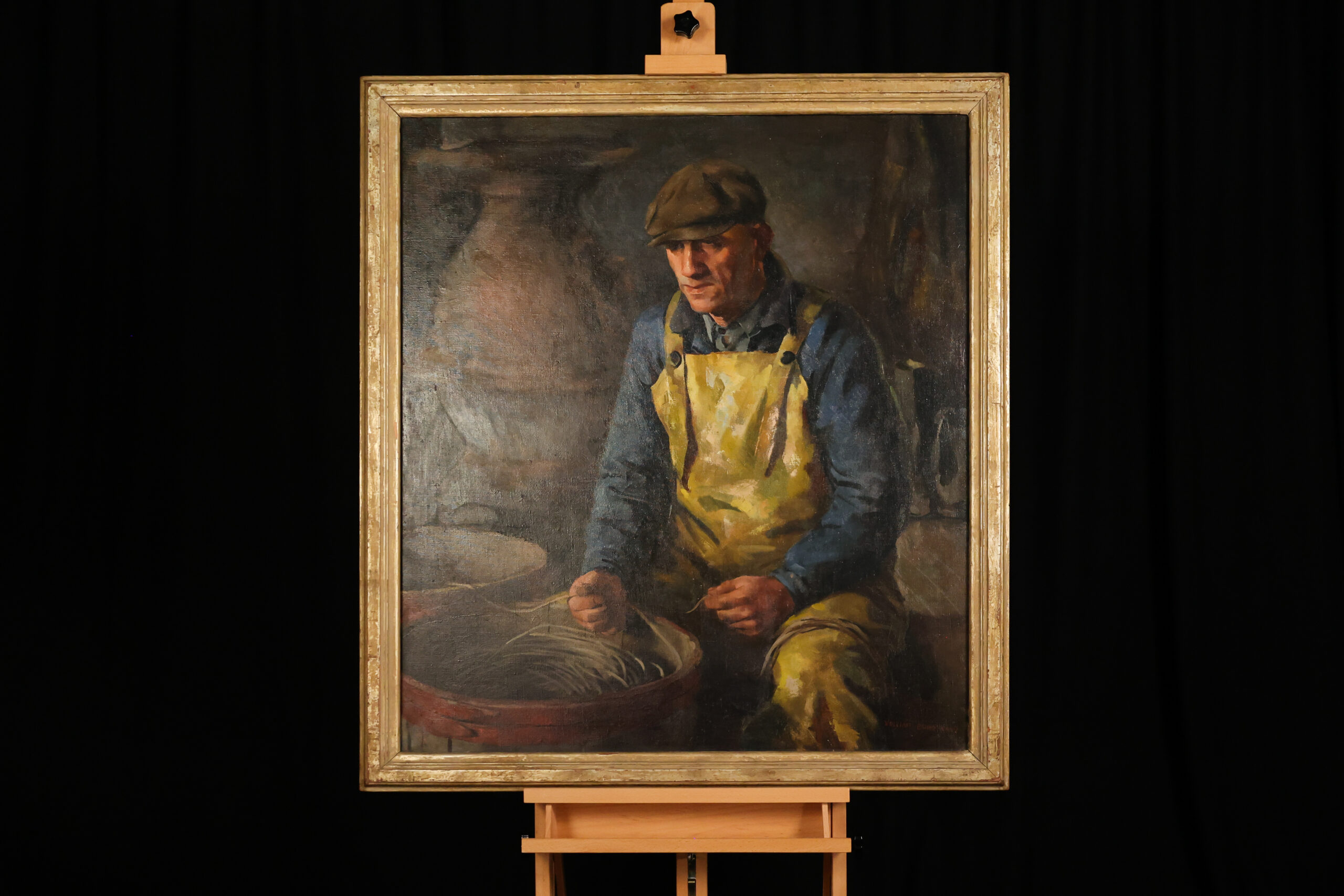
Historically, portraits are typically painted of people that society deems “important” – leaders, politicians, philanthropists. So for a small town, immigrant fisherman to fill the large canvas of this stunning portrait is especially poignant. Manuel Gaspar’s body language is so different from that of a traditional portrait though. In lieu of a soft smile or prideful expression, we see tired eyes cast downwards, shaded by the brim of his cap.
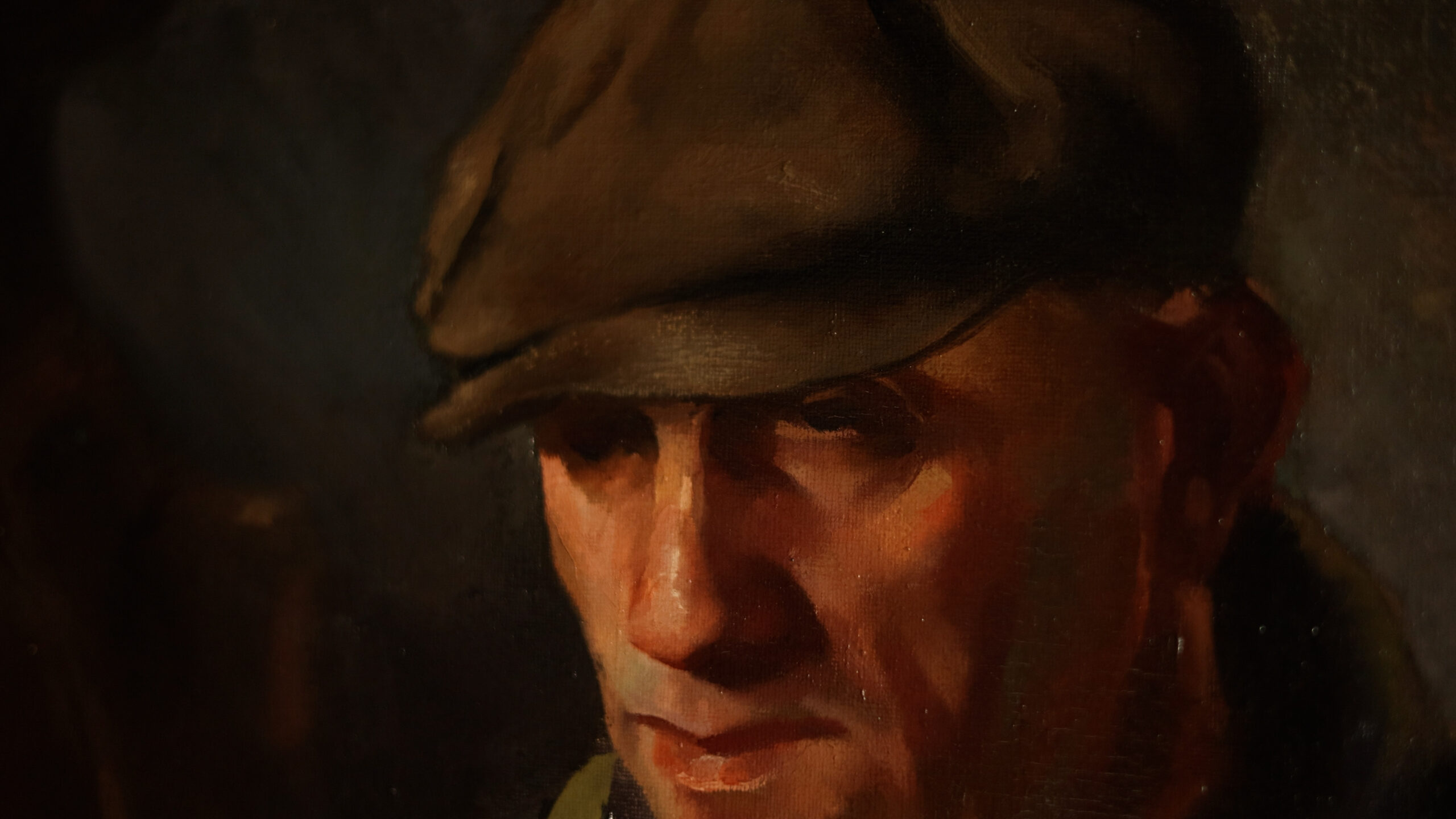
Harsh shadows creep across his face from the raking light that also illuminates his vibrant mottled yellow oilskins. He wears a blue-collared shirt underneath a heavier blue jacket, needing the layers for cold New England days on the water.
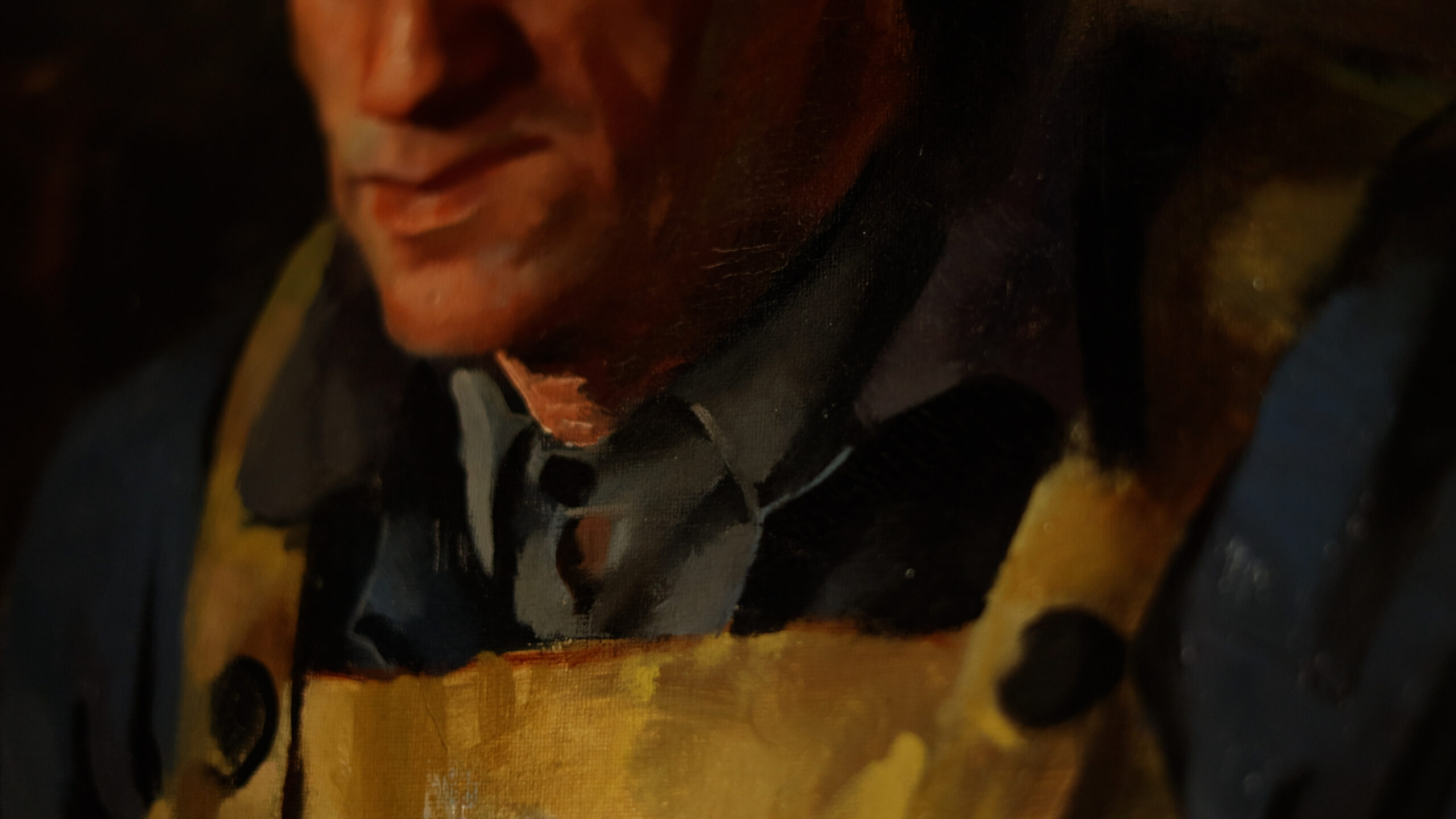
We see two half- barrels with lengths of cord spiraled inside, more sections of cord lay across Manuel’s left knee at the right of the portrait. He holds them in his steady hands like he doesn’t want to stop what he’s doing, or needs to occupy his time while this portrait is painted.
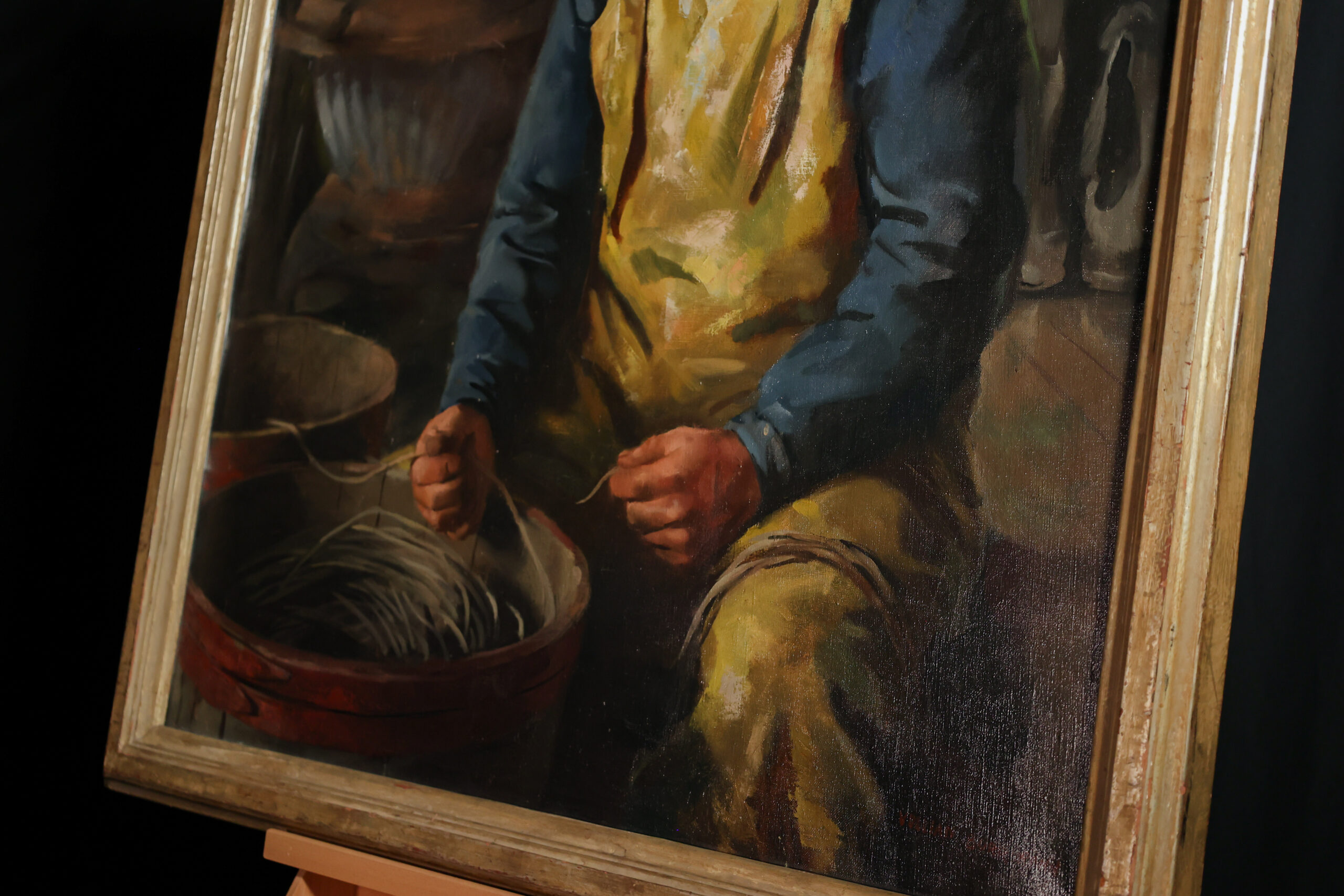
His body language is that of discomfort, of humility like he, too, is asking that same question, “What does he see in me? Why is he painting me?”
Why Him?
That question that I asked myself over and over, questioning, searching when the real question was right in front of me – why not him? Why not Manuel Gaspar? Why not a man who left his home behind and risked everything to find a better life? Why not a blue collar fisherman who would perhaps otherwise be forgotten, overlooked.
And though I don’t know the exact reason Vollian Burr Rann painted this portrait, I know what I see, what this works says to me and, hopefully, what it said to Manuel Gaspar too. That this man – he has worth. That his place and contributions in our society are valuable.
A statement that would, perhaps take Manuel Gaspar off-guard, cause him to lower his eyes, unsure of how to respond because for so many years, since he first arrived in America, he may have been belittled and told that he was unwelcome. A sentiment that ripples through our society today- nearly a century after this work was painted, but my lasting question is, “why?”
What I see in this portrait is the essence of our mission:
Respect.
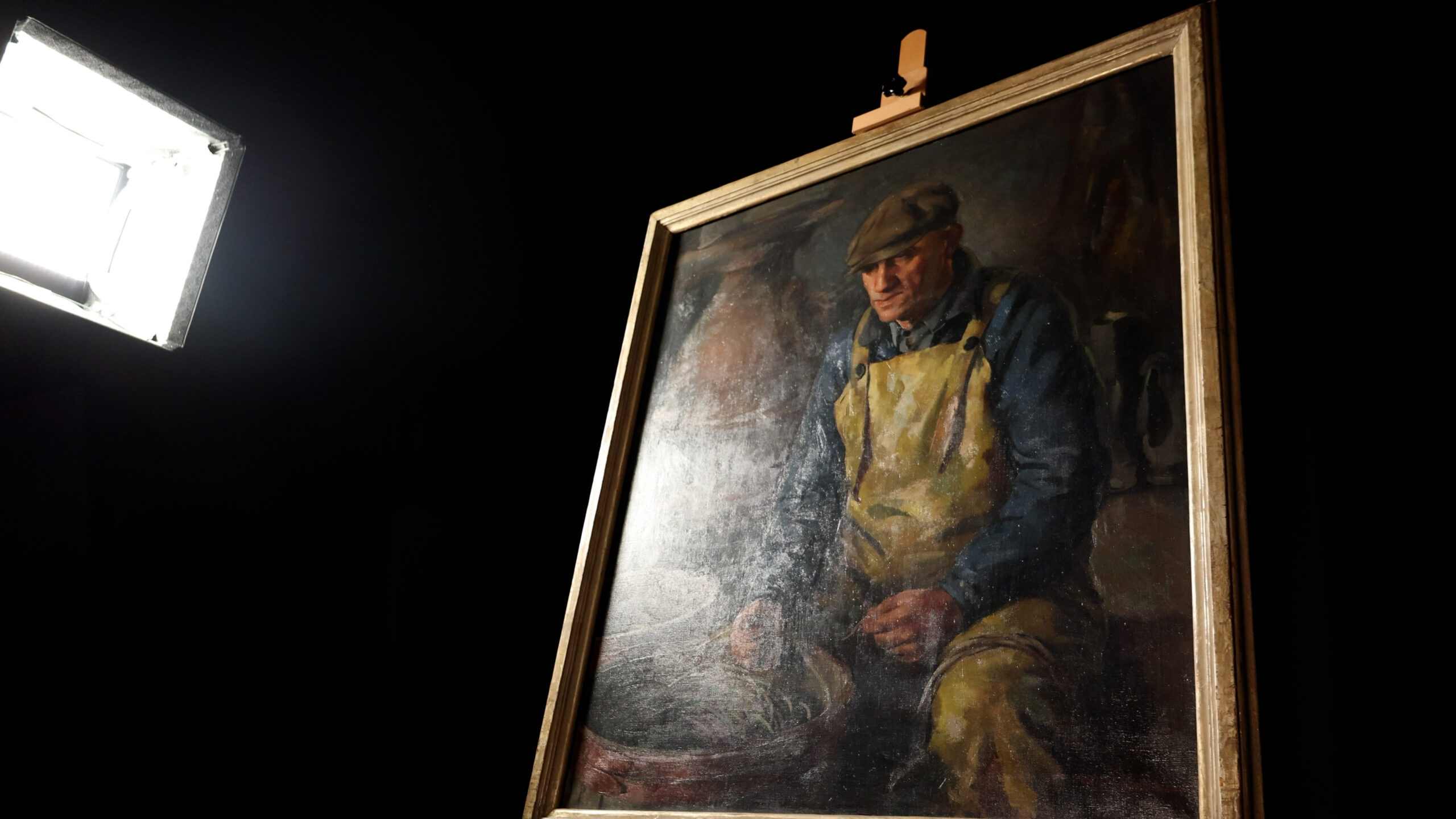
Respect because we are all humans, all mariners, drawn to and connected through the waters. This connection at its core strips away barriers like background, age, career, belief and any other classifications that society imposes upon us. It says “see, we’re really not so different- you and me.”
And, I think that’s what drew me to this work all along.
This portrait is different in so many ways, in its style, its treatment, its subject matter – but that’s a beautiful thing because in celebrating its differences, we can also celebrate out own and through that, we can celebrate all mariners, just like Manuel Gaspar.
Watch the full episode on YouTube!